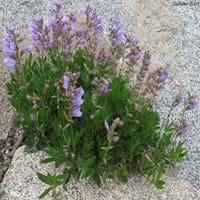Life Span
Perennial
Perennial
Type
Grass
Perennial, Shrub
Origin
North America, Europe, Asia
Northwestern United States, Canada
Types
Bigleaf hydrangea, Hortensia, Smooth hydrangea, Oakleaf hydrangea, Annabelle
sharpleaf penstemon, white-margined beardtongue, lowland beardtongue
Habitat
Forest edges, Hillside, Woods
foothill woods, High elevation, Open areas, Rocky areas
USDA Hardiness Zone
Not Available
4-9
Sunset Zone
2a, 2b, 3a, 3b, 4, 5, 6, 7, 8, 9, 10, 11, 12, 13, 14, 15, 16, 17, 18, 19, 20, 21, 22, 23, 24
1a, 1b, 2a, 2b, 3a, 3b, 4, 5, 6, 7, 14, 15
Habit
Upright/Erect
Mat-forming
Flower Color
Blue, Dark Purple, Light Purple, Red, White
Purple
Flower Color Modifier
Bicolor
Bicolor
Fruit Color
Not Available
Brown
Leaf Color in Spring
Dark Green
Dark Green
Leaf Color in Summer
Light Green
Dark Green
Leaf Color in Fall
Dark Green, Gold
Dark Green
Leaf Color in Winter
Gold, Tan
Dark Green
Leaf Shape
Oblovate
Narrow and lance shape
Plant Season
Spring, Summer, Fall, Winter
Spring, Summer, Fall, Winter
Sunlight
Partial Sun, Partial shade
Full Sun, Partial Sun
Type of Soil
Clay, Loam, Sand
Loam, Sand
The pH of Soil
Acidic, Neutral, Alkaline
Acidic, Neutral
Soil Drainage
Average
Well drained
Bloom Time
Early Summer, Summer, Late Summer
Late Spring, Early Summer
Tolerances
Wet Site, Salt, Soil Compaction
Drought
Where to Plant?
Container, Ground
Ground
How to Plant?
Seedlings, Stem Planting
Seedlings
Plant Maintenance
Medium
Medium
Watering Requirements
Not Available
Needs less watering, Requires regular watering, Water occasionally
In Summer
Average Water
Lots of watering
In Spring
Moderate
Moderate
In Winter
Average Water
Average Water
Soil pH
Not Available
Acidic, Neutral
Soil Type
Not Available
Loam, Sand
Soil Drainage Capacity
Not Available
Well drained
Sun Exposure
Not Available
Full Sun, Partial Sun
Pruning
Remove damaged leaves, Remove dead branches, Remove dead leaves
Remove damaged leaves, Remove dead branches, Remove dead leaves
Fertilizers
All-Purpose Liquid Fertilizer
All-Purpose Liquid Fertilizer
Pests and Diseases
Red blotch
Red blotch
Plant Tolerance
Wet Site, Salt, Soil Compaction
Drought
Flower Petal Number
Single
Single
Foliage Texture
Fine
Fine
Foliage Sheen
Not Available
Glossy
Invasive
Not Available
No
Self-Sowing
Not Available
No
Attracts
Bees, Flies
Hummingbirds, Butterflies
Allergy
Chest tightness, Diarrhea, Dizziness, Nausea, Vomiting
Asthma, Pollen
Aesthetic Uses
Not Available
Cottage Garden, Showy Purposes
Beauty Benefits
Not Available
Not Available
Edible Uses
Not Available
Yes
Environmental Uses
Air purification
Air purification, Wildlife
Medicinal Uses
Fever, Kidney problems, Urinary tract problems
Recovering internal injuries, Wounds
Part of Plant Used
Flowers, Root
Flowers
Other Uses
Not Available
Container, Used as Ornamental plant, Veterinarian uses
Used As Indoor Plant
Not Available
No
Used As Outdoor Plant
Yes
Yes
Garden Design
Not Available
Alpine, Container, Mixed Border, Rock Garden / Wall, Wildflower
Botanical Name
DESCHAMPSIA cespitosa
PENSTEMON fruticosus 'Purple Haze'
Common Name
Tufted Hairgrass
Bush Penstemon, Shrubby Penstemon
In Hindi
Hydrangea
Bush Penstemon
In German
Hortensie
Bush Penstemon
In French
Hortensia
Bush Penstemon
In Spanish
Hortensia
Bush Penstemon
In Greek
υδραγεία
Μπους Penstemon
In Portuguese
Hortênsia
Bush, Penstemon
In Polish
Hortensja
Bush Penstemon
In Latin
Hibiscus
Persicaria Bush
Phylum
Not Available
Magnoliophyta
Class
Not Available
Magnoliopsida
Order
Not Available
Scrophulariales
Family
Not Available
Scrophulariaceae
Genus
Not Available
Penstemon
Clade
Not Available
Angiosperms, Asterids, Eudicots
Tribe
Not Available
Not Available
Subfamily
Not Available
Not Available
Number of Species
Not Available
Importance of Tufted Hairgrass and Bush Penstemon
Want to have the most appropriate plant for your garden? You might want to know the importance of Tufted Hairgrass and Bush Penstemon. Basically, these two plants vary in many aspects. Compare Tufted Hairgrass and Bush Penstemon as they differ in many characteristics such as their life, care, benefits, facts, etc. Every gardener must at least have the slightest clue about the plants he wants to plant in his garden. Compare their benefits, which differ in many ways like facts and uses. The medicinal use of Tufted Hairgrass is Fever, Kidney problems and Urinary tract problems whereas of Bush Penstemon is Recovering internal injuries and Wounds. Tufted Hairgrass has beauty benefits as follows: Not Available while Bush Penstemon has beauty benefits as follows: Not Available.
Compare Facts of Tufted Hairgrass vs Bush Penstemon
How to choose the best garden plant for your garden depending upon its facts? Here garden plant comparison will help you to solve this query. Compare the facts of Tufted Hairgrass vs Bush Penstemon and know which one to choose. As garden plants have benefits and other uses, allergy is also a major drawback of plants for some people. Allergic reactions of Tufted Hairgrass are Chest tightness, Diarrhea, Dizziness, Nausea and Vomiting whereas of Bush Penstemon have Asthma and Pollen respectively. Having a fruit bearing plant in your garden can be a plus point of your garden. Tufted Hairgrass has no showy fruits and Bush Penstemon has no showy fruits. Also Tufted Hairgrass is not flowering and Bush Penstemon is not flowering . You can compare Tufted Hairgrass and Bush Penstemon facts and facts of other plants too.




